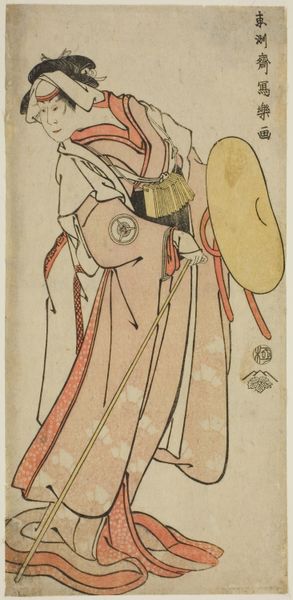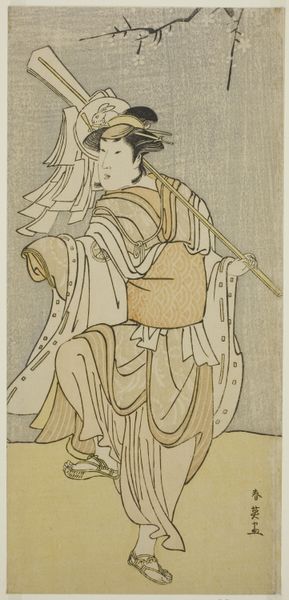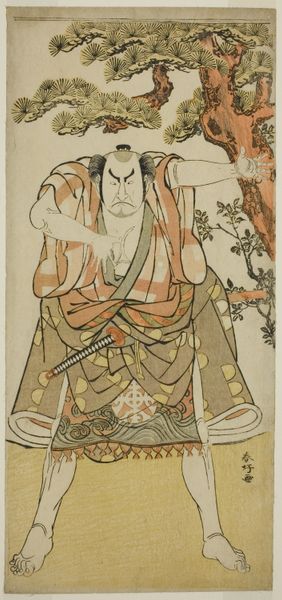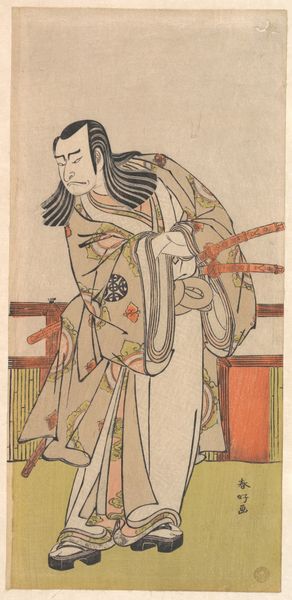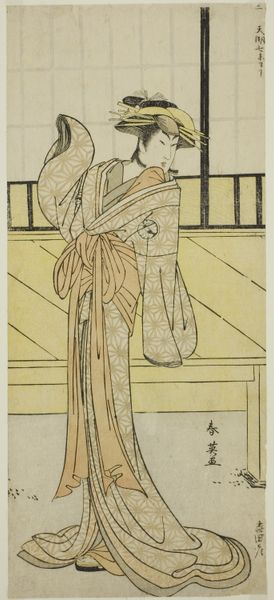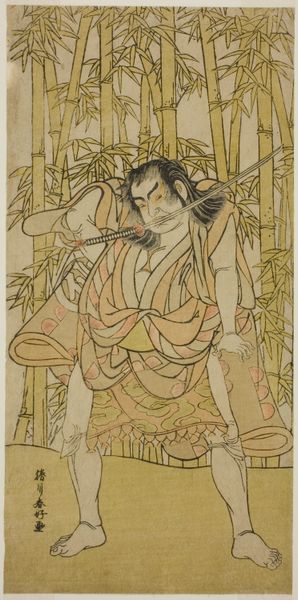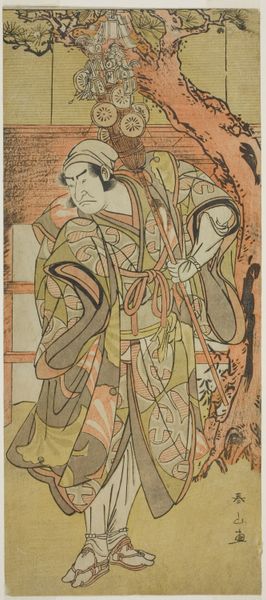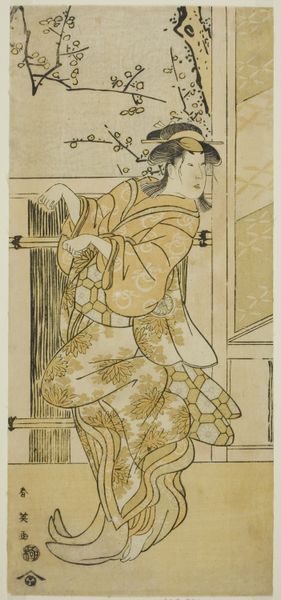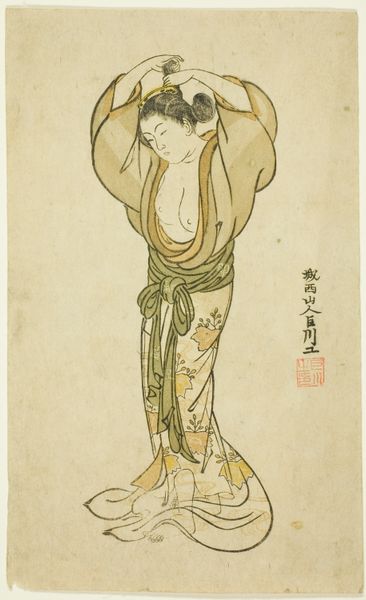
print, woodblock-print
#
portrait
# print
#
caricature
#
asian-art
#
caricature
#
ukiyo-e
#
woodblock-print
Dimensions: 11 3/5 x 5 5/8 in. (29.5 x 14.3 cm)
Copyright: Public Domain
Editor: Here we have Katsukawa Shunko's woodblock print, "The Third Otani Hiroji as a Wrestler," from sometime between 1780 and 1800. There's a striking directness to this portrait, yet it almost feels… unfinished? I'm curious, what cultural nuances am I missing in its portrayal of this wrestler? Curator: Well, let's think about the Ukiyo-e tradition in which it's situated. The print is more than just a portrait; it's a commentary on the celebrity culture of Edo-period Japan. Consider the role of Kabuki actors and sumo wrestlers like Otani Hiroji. They weren't just performers; they were tastemakers who influenced fashion and social trends. Does that change how you perceive the work? Editor: It does! Knowing he was a "tastemaker" makes me wonder how intentional the “unfinished” quality might be – perhaps even a comment on constructed identity. Curator: Precisely! The artifice is part of the appeal. Ukiyo-e prints were mass-produced, making celebrity accessible, while also contributing to the construction of celebrity itself. How do you think the museum display contributes to the imagery's “public role”? Editor: Placing it in a museum, centuries later, almost elevates it further, imbuing a figure once popular, and perhaps fleeting, with historical gravitas. Curator: Exactly! And that’s a layer of meaning added by the institution itself. Editor: Fascinating. I never would have considered that without this context. Curator: The reception history can be just as important as the original intent.
Comments
No comments
Be the first to comment and join the conversation on the ultimate creative platform.

